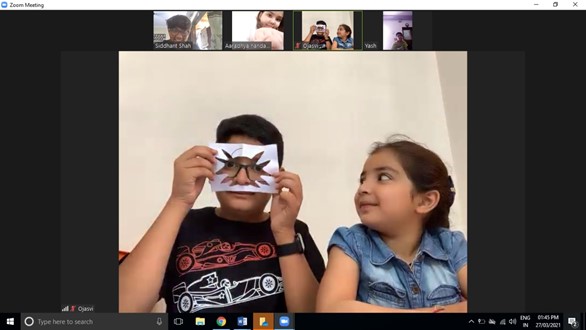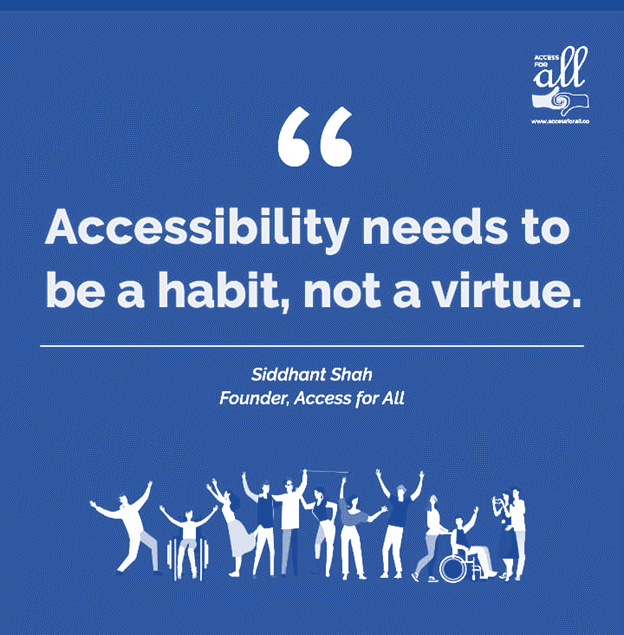Museums + Autism = Access for ALL: Autism Awareness Day (Siddhant Shah, Access for ALL)
Written by Siddhant Shah, Founder Access For ALL, Museum and Art Accessibility Expert
Every year 2 April is celebrated and recognised internationally as World Autism Awareness Day. It is an encouraging gesture by Member States of the United Nations to take measures to raise awareness about people with autistic spectrum disorders including autism and Asperger syndrome throughout the world.

It is very important to understand that not all disabilities are visible and require physical infrastructural support. Developmental disabilities can be handled by awareness, attitudinal change and via inclusive outreach activities with some physical changes to make museums a safe place for the visitors. Not many understand that Autism is a spectrum based condition and the barriers that each visitor faces to accessing museums can differ and be difficult to predict. For a visitor with autism, a crowded opening evening, to having empty echoing room with dim lighting, to having multiple textures to experience, can pose as a challenge to them.
For a museum, being a secular space, it is imperative to be accessible to all and this doesn’t mean that it needs to provide for ONLY physical access. But also consider what can the visitors with autism experience and take back with from these visits.
Some of the things that museums can do with a minimum budget are:
- Relaxed Viewing Hour – Many museum across the globe are starting to open an hour early or an extend hour beyond the closing time to accommodate for audiences with developing disabilities to enjoy the museum at their own pace with limited number of staff and visitors around them. National Museums Liverpool run events during Sunday mornings when visitor numbers are generally lower.
- Tactile Materials and Handling Objects – For children with autism who are visiting museums for the first time, looking at objects behind a glass case can instigate them to want to touch or approach the object for a better viewing. In this case, a tactile collection/handling objects which are used to make the collection accessible to the blind and visually impaired, can be used to satisfy their tactile needs. Beware that not all would feel comfortable holding and touching all types of material surfaces, please check in advance and orient the person beforehand.

www.accessforall.co
- Autism training: It is important to sensitize all members of staff, even security staff, because they are the first point of contact and if those interactions aren’t pleasant then it ruins the entire experience, even before entering the museum.
- Go MMAD: Make Museums Accessible Digitally. Over the last year we all have seen the power of digital and virtual mediums have to connect with people. Digital Accessibility works wonders for those with mobility and developmental disabilities as it breaks the geographical barriers and the museum can be made available on a screen. Multiple art outreach and art therapy sessions can be conducted digitally and all can be a part of it. It is an approach where the museum can reach the person and not vice versa.

https://www.facebook.com/Nationalmuseumnewdelhi/photos/3099654270095291
The new normal caused by the COVID-19 pandemic has undoubtedly obstructed the ongoing efforts of museums and cultural institutions to implement the in-situ access models and inclusive outreach to bring in diverse audiences. At the same time, new ways of working, including remote working and the use of new digital technologies, have created opportunities to reach the visitors virtually and break the barriers, for curators, museum educators and others working on the autism spectrum that previously found it difficult to thrive in traditional workplace environments.
I would like to conclude by saying that Accessibility is all about the experience that one takes back with themselves. Thus accessibility needs to be at the apex of any museum outreach.

Author Bio:
Ar. SIDDHANT SHAH, national level Universal Design awardee, founder-director of Access For ALL, is a TEDx Speaker, Universal Design expert, and an educationist, specializing in bridging the gap between Disability using Cultural Heritage. He works with corporate, jails, schools-special edu., museums, art festivals, galleries, and heritage sites to make them inclusive through educational and multi-sensory experiential activities, focusing on kids/ senior citizens with special needs. He innovative ‘Inclusive Arts-based Therapy’ binding fine arts and disabilities. He has curated cultural and corporate wellness projects in India, Malaysia, China, Pakistan, Spain, Speed mentor for The British Museum’s ITP+ event, and was selected for Tate Intensive at Tate Modern (U.K.).
Shah teaches and lectures on the ‘Inclusive Design Pedagogy’ and all things that intersect with experiential learning. He has worked with Sarva Sikhsha Abhiyan to conduct Capacity Building and Training Workshops for teachers and art educators. He was invited by IIT Guwahati for a keynote address on DESIGN FOR ALL.
We would like to hear from you!
Throughout April we would love to hear from the ITP network, to hear from a global perspective about how museums can be accessible for people with autism. We invite you to write about your experiences of working with people with autism:
- Do you, your museum or cultural venue run programmes for people with autism?
- What does your institution do to make it accessible to people with autism?
- How can museums encourage families with autistic children to visit?
- What barriers prevent people with autism visiting museums and how can they be overcome?
If you would like to be involved, please send us a blog post with pictures. We will then share the posts, throughout April, as a way for the ITP to celebrate World Autism Month.
Send your blogs to itp@britishmuseum.org




